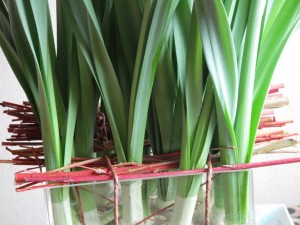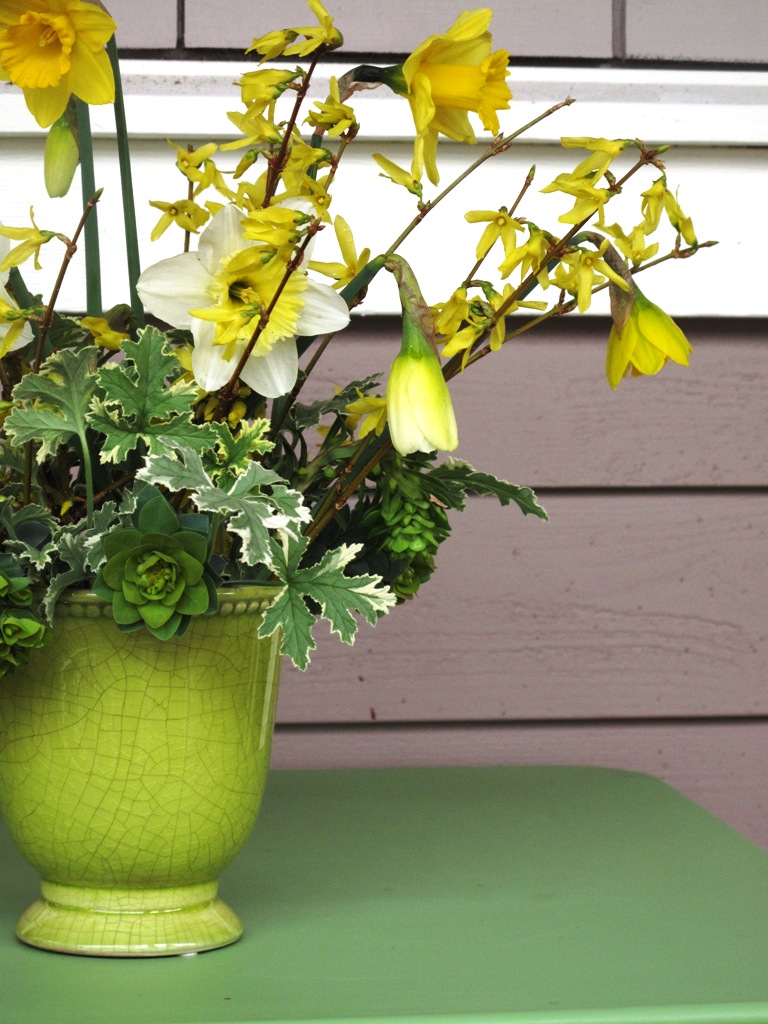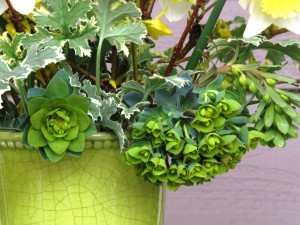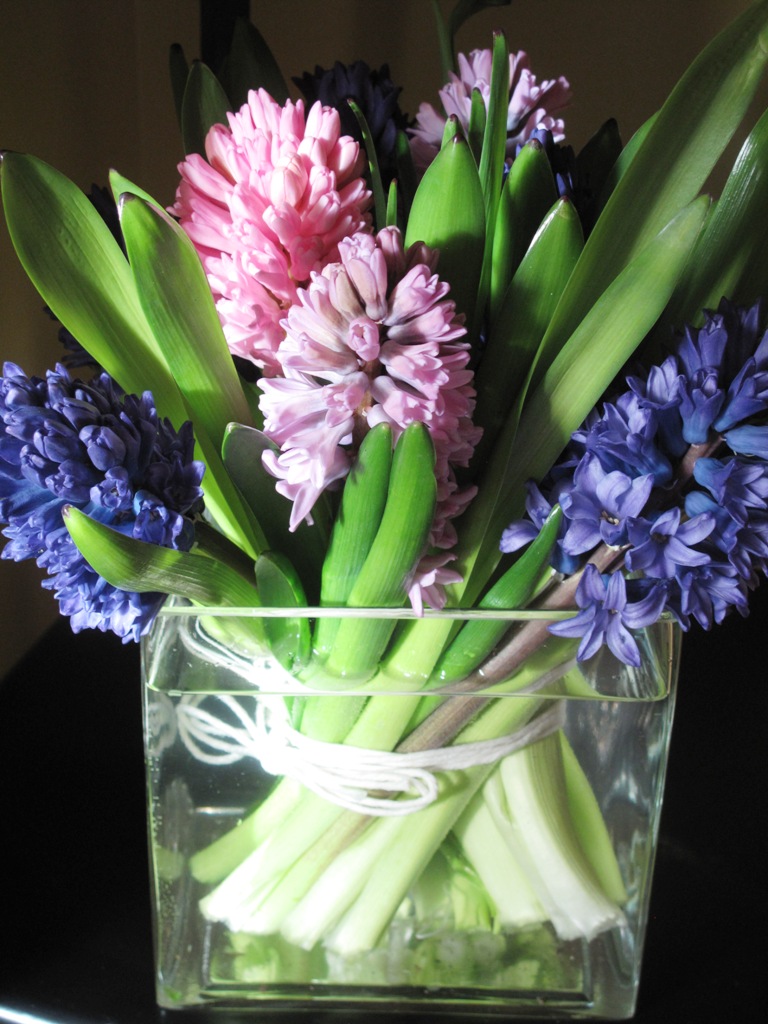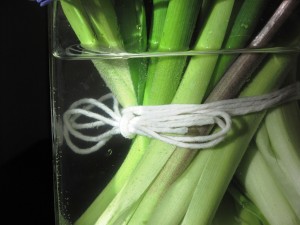Zen in Bloom
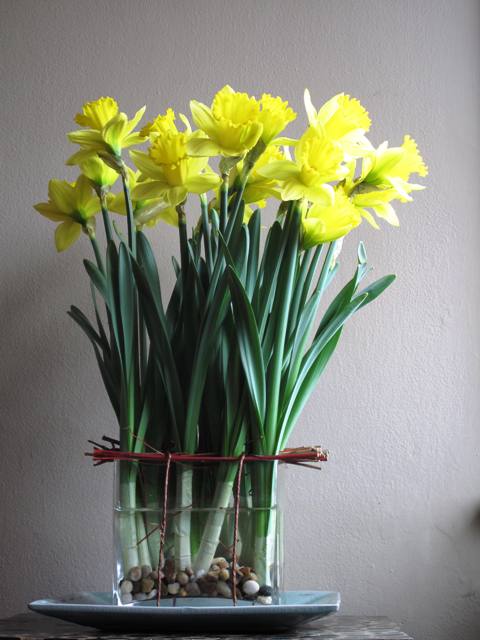
Showcasing a single type of flower – here, it’s spring daffodils – this technique is easy and carefree.
Ingredients:
15 stems common daffodils, from my garden
Multiple lengths of coral-pink twig dogwood, cut approximately 2 inches wider than the vase opening. Any straight, woody branch will work, including vine maple, pussy willow or the colorful twig dogwood (Cornus sanguinea or C. sericea)
Vase:
6-inch tall x 6-inch square glass vase (this design adapts to any square or rectangular glass vase)
Other supplies:
Decorative pebbles
Twine-wrapped wire (available at craft stores in natural or green)
Design 101
Borrow inspiration: The idea for this bouquet came from a project featured in Design, a publication of The Flower Arranging Study Group of the Garden Club of America. Whenever you’re inspired by another designer’s technique, it’s important to give it your own twist rather than make a direct copy. For example, the original creation used florist’s foam inside the container, but I found it unnecessary, especially since the pebbles and twigs are enough to hold the daffodil stems in place.
NOTE: Each Sunday of this year, I will post my photographs, “recipe” and tip for that week’s floral arrangement, created for my new book, Slow Flowers.
Enjoy the floral journey through 52 weeks of the year~









